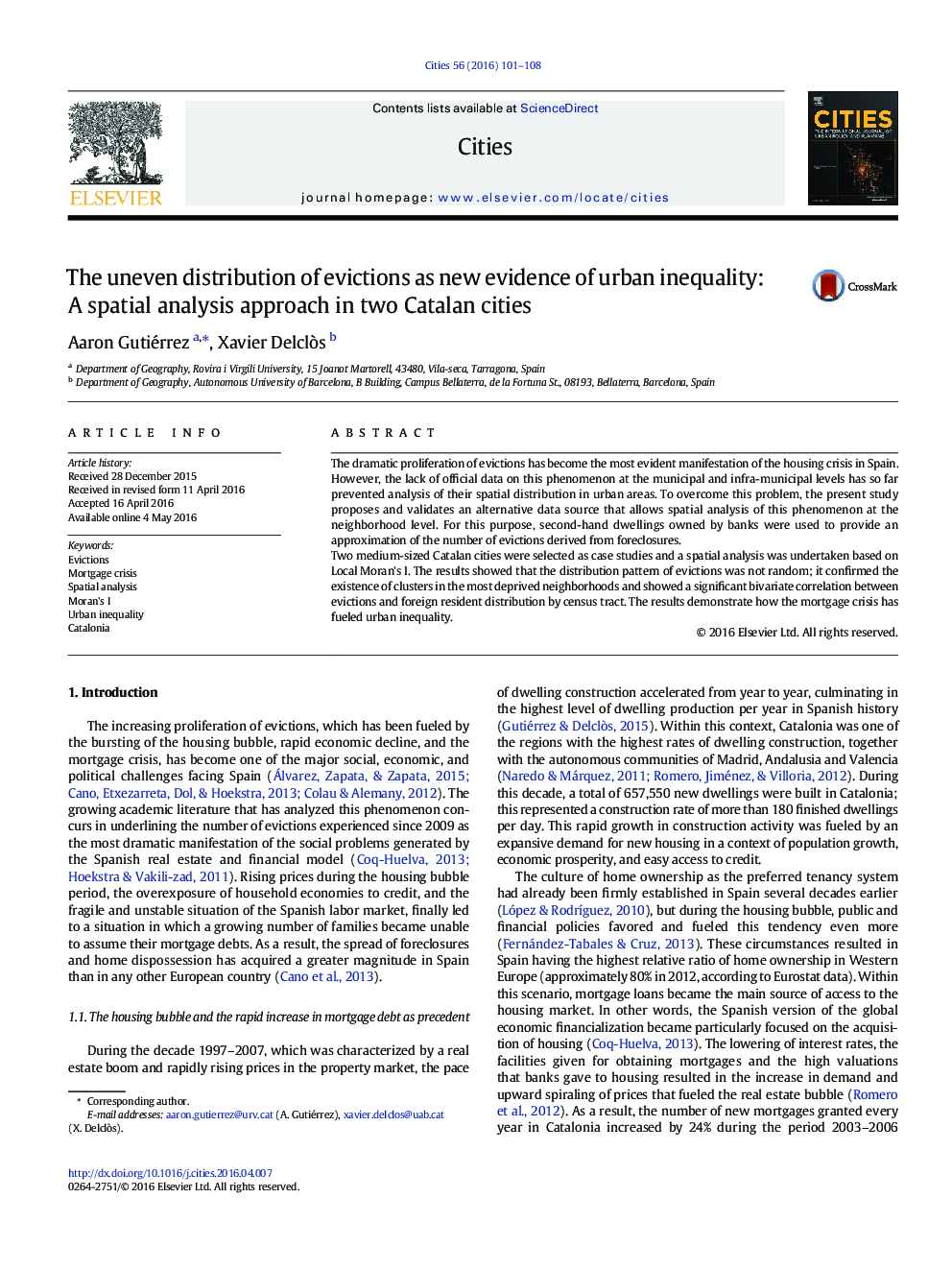| Article ID | Journal | Published Year | Pages | File Type |
|---|---|---|---|---|
| 1008192 | Cities | 2016 | 8 Pages |
•The spatial distribution of evictions was analyzed, it provides evidence of urban inequality fueled by the mortgage crisis.•Spatial analysis revealed a strong autocorrelation of evictions distribution in determinate neighborhoods.•It also revealed a spatial correlation with immigrant population distribution in the same urban areas.•Both distribution patterns revealed a clear tendency towards the clustering of evictions in the deprived neighborhoods.
The dramatic proliferation of evictions has become the most evident manifestation of the housing crisis in Spain. However, the lack of official data on this phenomenon at the municipal and infra-municipal levels has so far prevented analysis of their spatial distribution in urban areas. To overcome this problem, the present study proposes and validates an alternative data source that allows spatial analysis of this phenomenon at the neighborhood level. For this purpose, second-hand dwellings owned by banks were used to provide an approximation of the number of evictions derived from foreclosures.Two medium-sized Catalan cities were selected as case studies and a spatial analysis was undertaken based on Local Moran's I. The results showed that the distribution pattern of evictions was not random; it confirmed the existence of clusters in the most deprived neighborhoods and showed a significant bivariate correlation between evictions and foreign resident distribution by census tract. The results demonstrate how the mortgage crisis has fueled urban inequality.
Graphical abstractFigure optionsDownload full-size imageDownload as PowerPoint slide
